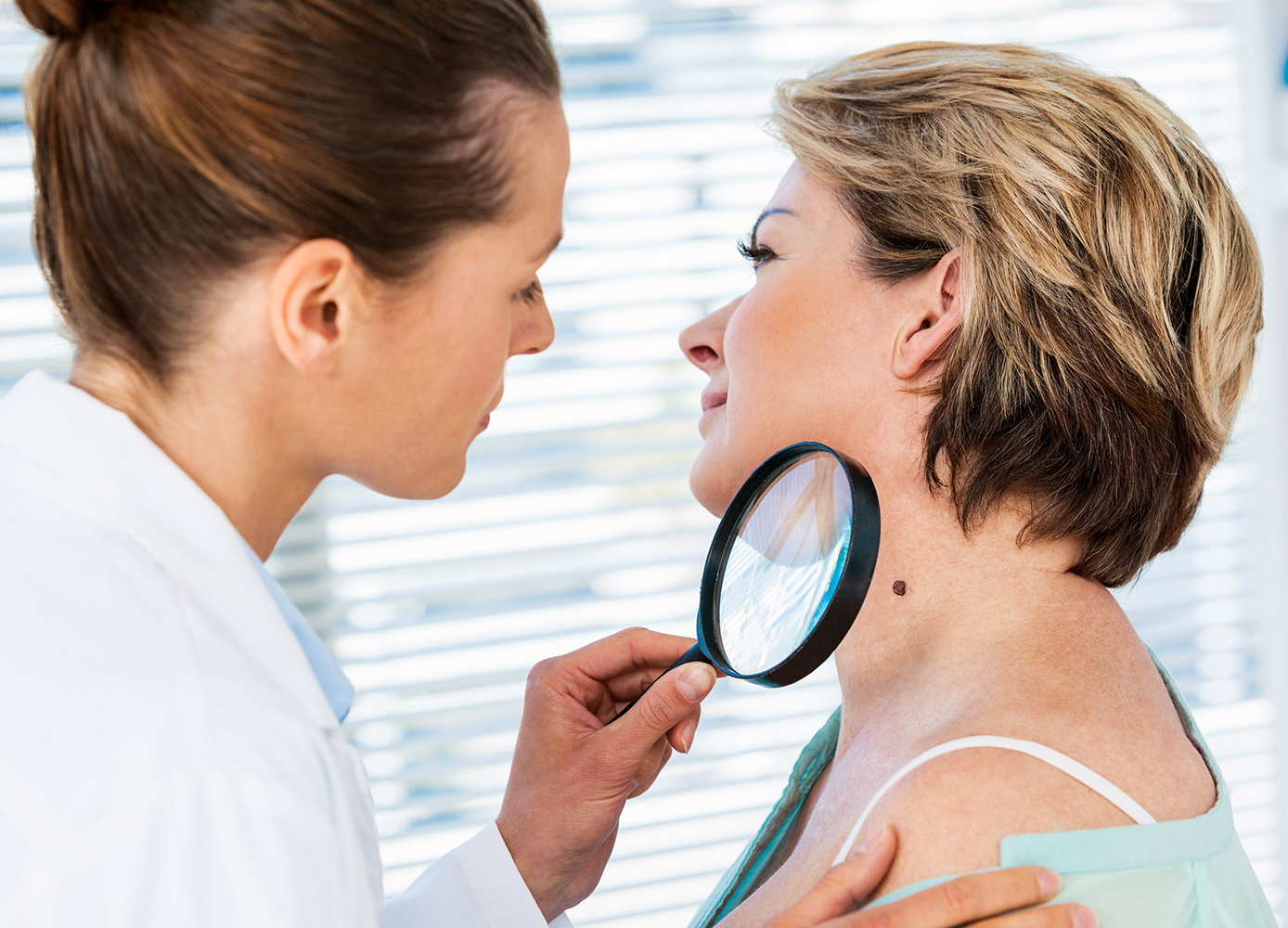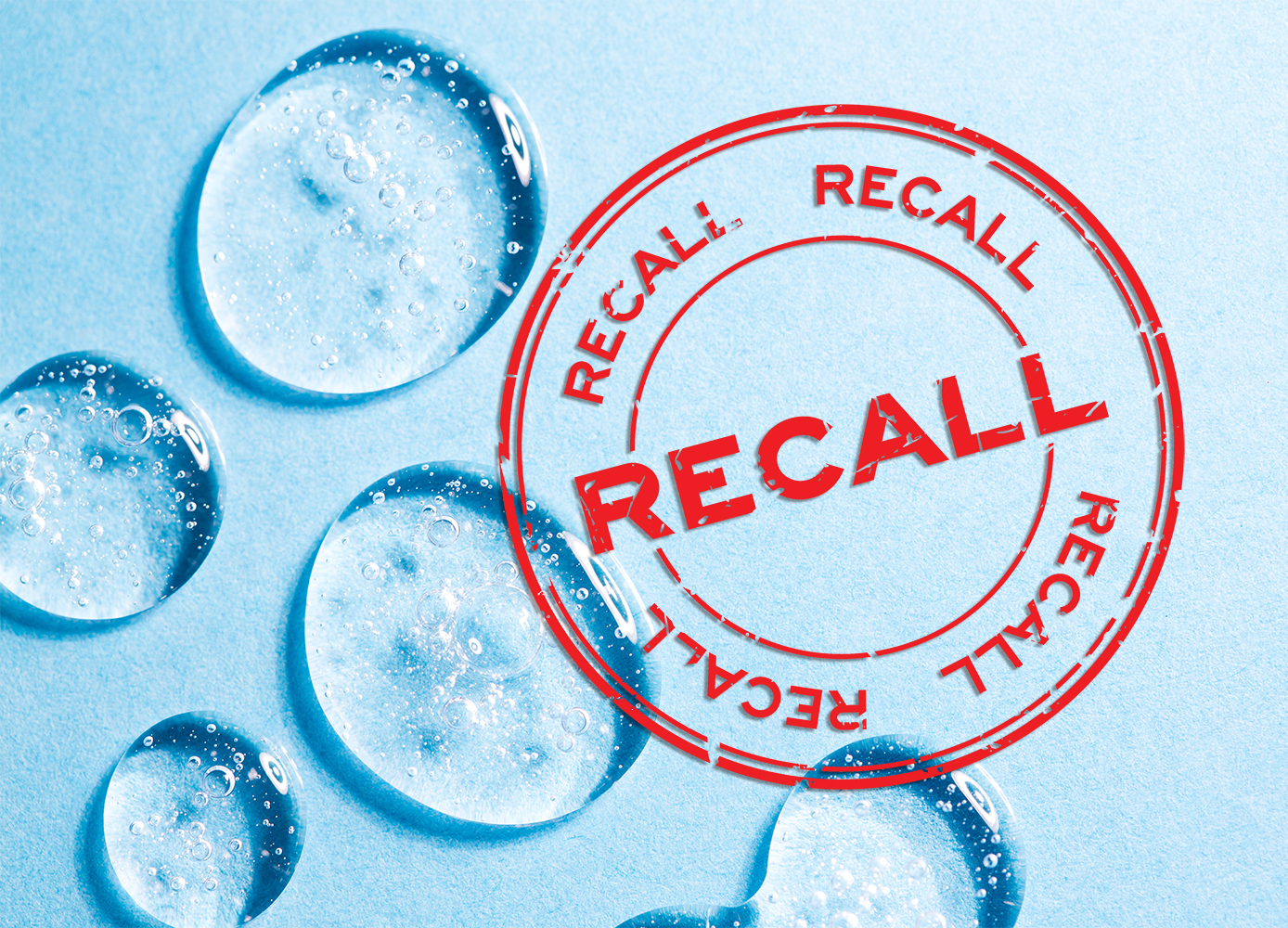The incidence of melanoma among Canadians has been on the rise; here’s what you need to know
By Wendy Haaf
Photo: iStock/Wavebreakmedia.
When Karen Jokinen of Peterborough, ON, first noticed a small black spot like a smudge from a marker on the back of her heel, she was only mildly curious. After all, the mark was tiny, and when you’re over 50, age spots and skin tags do start to appear.
Since the mark wasn’t visible unless she looked for it and didn’t hurt or itch, Jokinen mostly forgot about it. It wasn’t until about five months had passed that she turned to the Internet to help her decide whether to see her doctor about the spot—and a small blemish on her nose that stubbornly refused to heal.
“I don’t usually google anything medical, but I searched ‘black spot on heel of foot’ or something similar,” Jokinen says, “and the results told me it was either nothing or melanoma.”
By far the most potentially deadly skin cancer (albeit much less common than other types), melanoma has become increasingly prevalent over the past several decades. In the 1930s, the lifetime risk for melanoma was roughly 1 in 1,500; today, about 1 in 59 men and 1 in 73 women will develop the disease. In fact, it’s one of the fastest-rising types of cancer in Canada. For the year 2017 (the latest for which projections are available), the Canadian Cancer Society projected that 7,200 Canadians would be diagnosed with melanoma—and that the cancer would claim 1,250 Canadian lives in that year.
Although rates have risen more quickly in younger women, about half of melanomas are diagnosed in people over 50, and the incidence increases with age, especially in men past the half-century mark. While more women than men are diagnosed with melanoma before age 50, by 65, rates are twice as high in men, and at 80 and up, three times higher.
On the bright side, when melanoma is caught and treated promptly, the outlook is typically bright. “Very early-stage melanomas have cure rates in the 95-plus per cent range,” says Dr. Elaine McWhirter, a medical oncologist at the Juravinski Cancer Centre and an associate professor in the Department of Oncology at McMaster University in Hamilton, ON. And, unlike other forms of cancer, melanomas are usually visible, making the condition relatively easy to detect.
Before we cover what to look for, however, we’ll explore how melanoma arises and the factors that are linked with increased risk.
Risk Factors
Like other cancers, melanoma is caused by mutations, or “misprints,” in the DNA of cells—in this case, the skin’s pigment cells, or melanocytes.
“You damage your DNA and your body mends it, and if it doesn’t mend it correctly, then you have a chance of mutating genes that could cause melanoma,” explains Stephen Robbins, the scientific director of the Institute of Cancer Research at the Canadian Institutes of Health Research and a professor at the University of Calgary. (Cancer risk rises with age because the longer you live, the more cycles of renewal your cells go through, and thus, the greater the number of chances that such errors will occur.)
The leading risk factor for melanoma—concentrated or cumulative long-term exposure to UV light—can damage DNA directly, causing “signature mutations,” explains Irina Turchin, a Fredericton, NB, dermatologist and an assistant professor at Dalhousie University in Halifax. That means that a history of sunburn, the use of tanning beds, and spending a lot of time outdoors with unprotected skin are all risk factors. So, too, is a history of other skin cancers, precancers called actinic keratoses, and even tanning, since all are indications of sun damage. “Tanning is not protective against skin cancer,” Turchin stresses.
Traits tied to susceptibility to sunburn—fair skin, light-coloured eyes, and blonde or red hair, for instance—are also linked with an increased risk. Your DNA can also make you more predisposed to developing melanoma: for example, having a close relative with a history of the disease, or certain hereditary traits or conditions that are associated with an increased risk, such as having an unusually large number of moles—usually more than 50—or atypical-looking moles. And since a weakened immune system (for example, due to drugs that prevent rejection of a transplanted organ) interferes with the body’s ability to detect and destroy cancer cells, that, too, increases the odds. But even people with no risk factors can still get mela-noma, and melanomas can crop up in areas that are rarely, if ever, exposed to the sun, such as between the toes.
Keeping tabs on your skin, ideally with the help of a second set of eyes such as those of a partner, to scrutinize areas that are difficult to examine yourself (such as the back, where melanoma commonly occurs in men, as well as the neck and hairline) likely provides the best chance of spotting melanoma. Turchin suggests doing a thorough once-over about once a month, after getting out of the shower.
In one study, 53 per cent of melanomas were discovered by the person affected and another 15 per cent were detected by family members. According to the Canadian Dermatology Association, other research involving people at risk for melanoma (usually due to having had it previously) has found that those who do self-exams with the help of a friend or family member find the disease at an earlier stage and are up to 69 per cent less likely to die from the condition than those who do not check their skin.
The Signs
So what exactly are you looking for? While some experts advise using a mnemonic (see sidebar at end) to help remember five traits that are common to many melanomas and help differentiate between suspicious spots and ordinary moles, it may be simpler to watch for what Turchin calls the “ugly duckling” sign.
“Usually moles on the body will have a similar appearance, like members of the same family,” she explains, “so if there’s one that’s different, it should be checked.”
The same goes for marks that evolve or change in some way. “I think that’s the most telltale sign,” says Annette Cyr, a three-time melanoma survivor and the founder and chair of the board of the Melanoma Network of Canada. “Is it itching? Is it bleeding?”
Growth is another possible change: to monitor whether a mark may be getting bigger, Cyr suggests placing a dime or another item that can help you gauge size next to it and snapping a photo with your cellphone.
Blood-blister and scarlike lesions that appear in the absence of trauma are also suspect, McWhirter says, as are moles or marks (one form of melanoma resembles a stain) in unusual areas such as the palms of the hands, soles of the feet, and beneath fingernails or toenails. In short, if you see something that doesn’t look quite right, see your physician as soon as possible.
Almost immediately after Karen Jokinen saw the results of her online query, she consulted her family doctor. “She didn’t think there was anything wrong with my heel, but she wanted to get it checked out,” Jokinen says. “She was more concerned about the spot on my nose. So I got referred to specialists that day.”
“If the melanoma is very superficial, we excise the area and that’s the treatment,” Turchin says. In this case, the risk for spread or recurrence is low.
Suspected skin cancers are surgically removed (usually in-office) along with a rim of normal-looking tissue and sent to a lab for evaluation. The extra skin around the melanoma is removed to look for microscopic spread of cancer cells. How much surrounding tissue is taken depends largely on the depth of the mela-noma, notes Dr. Valerie Francescutti, an associate professor of surgical onco-logy and general surgery at McMaster University and a surgical oncologist at Hamilton Health Sciences Centre. “For melanoma in situ, which is like a precancer, it’s a five-millimetre margin,” she says. “For a thinner melanoma, less than one millimetre or maybe less than two millimetres, the margins are one centimetre.”
The biopsy of the mark on Jokinen’s foot was positive for melanoma, and since the surrounding skin also harboured cancer cells, she had to undergo a second, similar procedure. (That spot on her nose? It turned out to be three non-melanoma carcinomas.) Thankfully, this time the margins were clear. Now, she’s spreading the word to be on the lookout for clues that could hint at possible skin cancer. “The mark on my heel wasn’t raised and it didn’t hurt,” she says. “I had no idea it could be so serious.”
—-
The ABC(DE)s of Melanoma
A mark or mole may be a melanoma if it has one or more of the following traits:
A: Asymmetry: one side may be different from the other.
B: Border: an irregular, jagged, or fuzzy (rather than defined) border.
C: Colour: a mixture or variation in colour (rather than a uniform hue).
D: Diameter: width greater than six millimetres.
E: Evolution: changes, such as growth, itching, bleeding, or sudden appearance.






